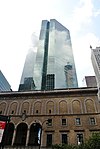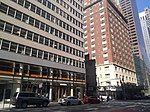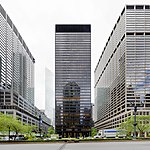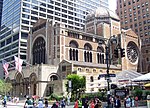Racquet and Tennis Club
1876 establishments in New York (state)Athletics clubs in the United StatesBeaux-Arts architecture in New York CityClubhouses on the National Register of Historic Places in ManhattanClubs and societies in Manhattan ... and 16 more
Clubs and societies in the United StatesGentlemen's clubs in New York CityGentlemen's clubs in the United StatesMcKim, Mead & White buildingsMidtown ManhattanNew York City Designated Landmarks in ManhattanPark AvenueRacquets venues in the United StatesReal tennis venuesSports venues completed in 1918Sports venues in ManhattanSports venues on the National Register of Historic Places in New York CitySquash venues in the United StatesTennis clubsTennis venues in New York CityUse mdy dates from March 2021

The Racquet and Tennis Club, familiarly known as the R&T, is a private social and athletic club at 370 Park Avenue, between East 52nd and 53rd Streets in Midtown Manhattan, New York City.
Excerpt from the Wikipedia article Racquet and Tennis Club (License: CC BY-SA 3.0, Authors, Images).Racquet and Tennis Club
East 51st Street, New York Manhattan
Geographical coordinates (GPS) Address Nearby Places Show on map
Geographical coordinates (GPS)
| Latitude | Longitude |
|---|---|
| N 40.758611111111 ° | E -73.973611111111 ° |
Address
Hanover Bank Building
East 51st Street
10022 New York, Manhattan
New York, United States
Open on Google Maps










